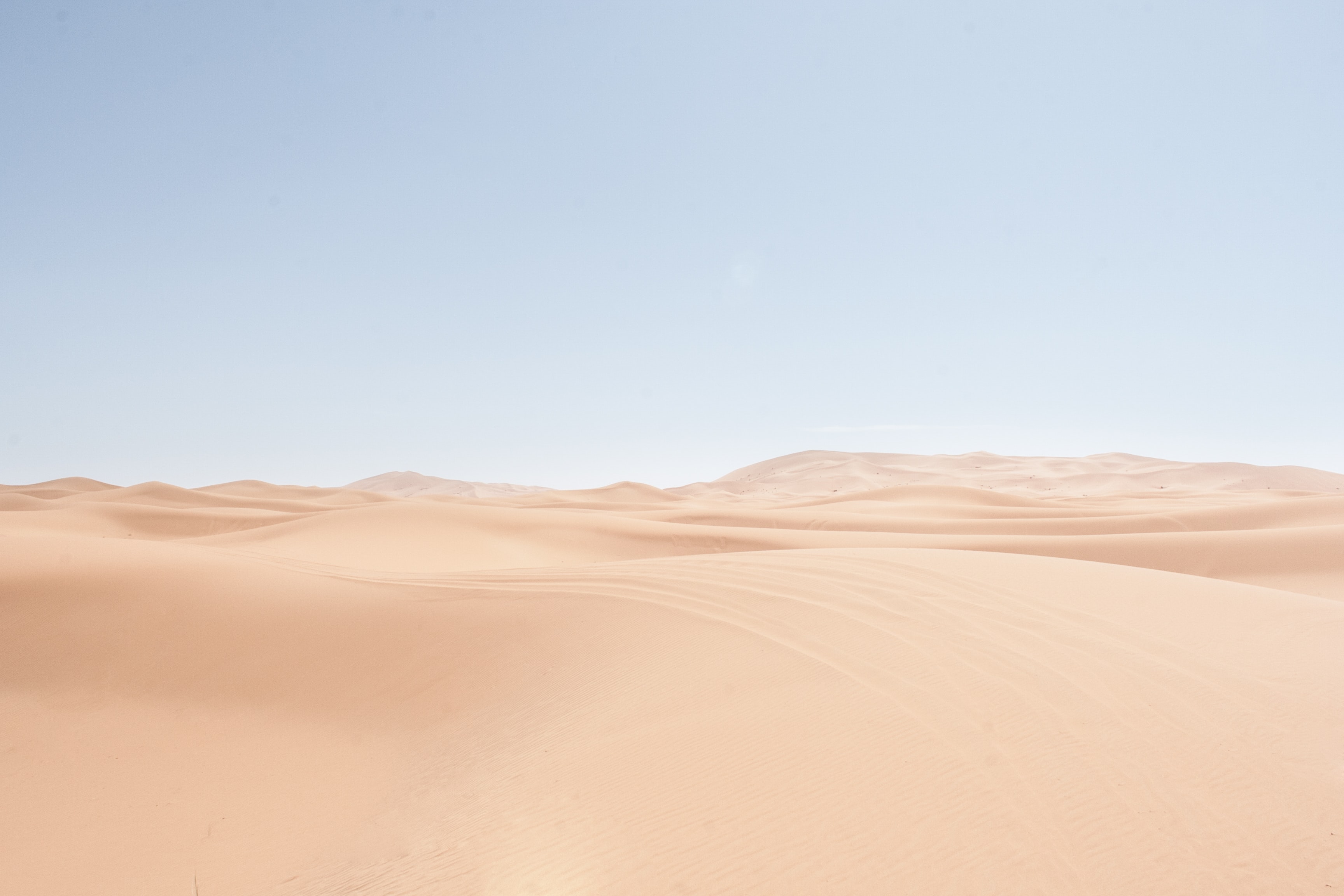The Eastern Desert
The Eastern Plain is a large section of the Great North or Amnari Desert stretching between Amin Duum to the west, and the Long Sea in the east. It is frequently broken up into several smaller areas for the purposes of navigation, of which the Salt Sea, the Wadi Tir, and the Dead Pan are the most well-known.
Because of its location between the coastal settlements of the Long Coast and Amin Duum itself, it is most frequently the site chosen for the Bala Dura out of Amin Duum itself, as well as the most frequently crossed of all sections of the Amnari Desert owing to the trade routes between Amnari and Outsider and Non-Amnari territories.
To the north, the Eastern Desert stretches as far as the Broken Coast and Sea, and to the south as far as the Second Dumke Cataract, where it borders with the arid Lower Caish Nur. Its Amnari name, Caish Nur, is believed to date from the late Keshwari period, although the etymology is uncertain. Several myths surrounding Isha’s early life take place in the northern regions of the Eastern Plain, especially tales surrounding the Crossing of the Salt Sea.
Geography
There are several distinct features to the geography of the Eastern Plain. At the westernmost edge, closest to Amin Duum, the landscape is mostly rock covered with a thin layer of sand, and marked by tall hoodoos and other notable formations, which may or may not be natural.
Several large oases can be found along the border between the Amin Duum and the unclaimed desert territories, most of which are maintained as watering holes for local wildlife and trading caravans from the settlements on the Long Sea Coast.
The central area is marked by a significant dune sea, smaller and less difficult to traverse than those to the west of Amin Duum, and finally, a bank of low mountains (rising to around 5000ft) to the east, running along the coast from north to south. These are, in turn, separated by large wadis that enable trading between the coastal and the inner desert regions.
The whole area receives on average less than an inch of rain a year, with temperatures ranging from around 14 all the way up to 40C in the High Summer period (Ashmuta).
Ecosystem
The Eastern Desert is principally a hyper-arid environment, with a delicate ecosystem subject to assault from high temperatures, long periods without rain, and frequent sand storms. This is compounded by wind systems blowing salt off the Salt Sea, which ensures that any species in the area are strongly adapted to a saline environment. This is especially true at the coastal fringes, where salt marshes line the Long Sea. It is not uncommon for some areas of the desert to go without rain for over 150 years.
Ecosystem Cycles
Owing to the lack of moisture, the Eastern Desert is prone to long periods of hyper-aridity. Cycles without rain can last over 150 years, resulting in the development of plant species capable of long periods of dormancy, or adapted to functioning with very little or no water. Most animal species take advantage of the various oases throughout the area, as well as the cycles of the River Duma.
Localized Phenomena
Sandstorms have prevalence of around 50-60 days per year, on average, although these tend to follow prevailing breezes in the central dune sea, and have less of an impact on either of the hinterland settlements. Of particular note, however, are kata-storms, which develop when the Gap is open at Amin Duum. Although the Gap itself is subterranean, kata phenomena are frequently observed at the westernmost boundary of the desert during open periods.
Fauna & Flora
Despite being an arid environment, the Eastern Desert has a wider range of flora and fauna than the regions to the west of the River Duma. Small rodents, including elephant shrews, jerboa, and desert mice are common, as well as vultures, white-headed eagles, and other bird species adapted to the dry conditions. Larger fauna are more common at the desert edge, especially within the Amin Duum Bubble and along the unclaimed stretches of the River Duma.
The mountainous regions are home to small packs of wolves, hyenas, as well as sheep, ibex, and gazelles. Small sheep-rearing communities live on the margins of the desert and trade across both the mountains and the dune sea. Smaller, wild species are commonly hunted, especially during the Bala Dura when held out of Amin Duum itself.
Natural Resources
The primary resource is salt. Small communities on the edge of the Salt Sea have farmed salt for trade to both Amnari and other tribes throughout the area. Salt sold into Amin Duum is frequently shipped out to other city states in the Alliance.
While salt is typically shipped directly into Amin Duum, the principal communities responsible for ore mining are to be found further north, based out of Tir Daala. Various precious metals, as well as iron, are mined throughout the more accessible areas.
History
First mention of the Eastern Desert, as the Keshwari Eastern Desert, appear in documents discovered in the Underground beneath Amin Duum itself. Ruins stretch across the perimeter and along a series of wadis and trade routes. References to a Keshwari Gate led researchers to investigate the north-eastern bridge, a narrow stretch of land between the Broken and Long Seas. Archaeological evidence suggests that the Keshwari Empire may have treated this region as its formal border with its closest neighbouring empire, Turat, during the Five Empires Period.
Tourism
The predominant visitors to the area are young Amnari either training for or conducting the Bala portion of the Bala Dura. A small but steady pattern of migration from the inner regions of the Desert toward Amin Duum has been noted in recent years, especially as the Amin Duum Bubble opened up clinics along the perimeter. People are known to travel thousands of miles across the dune sea and even the Salt Sea in order to take advantage of Amnari healthcare provision.
Alternative Name(s)
Caish Nur, Upper Caish Nur
Type
Desert
Vehicles Present
Included Locations
Related Traditions





Comments